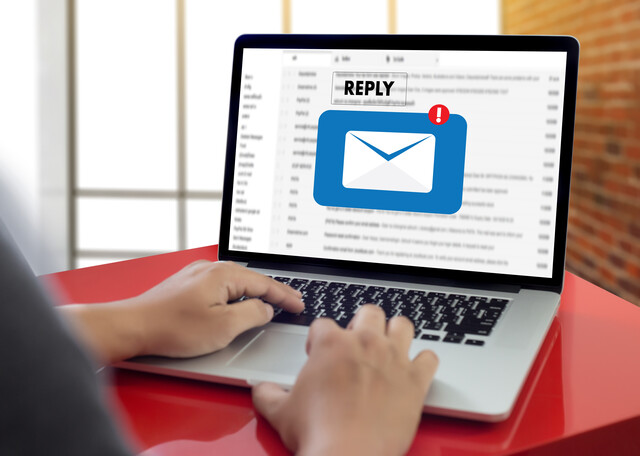Copywriting isn't just about writing. A lot more goes into creating an advertisement than just writing the words. In this article, we're going to show you how those skills get put to work whenever you create advertisements by discussing the steps you need to take and the questions you need to ask before you sit down to write copy.
Getting to Know Your Client
However, when you first start a project with a client, you need to get to know the client. By getting to know the client, we mean the client's industry.
You will always want to take some time to do some preliminary research before you have that first meeting with a new client. Start out by familiarizing yourself with their company. You can learn a lot by going to their website. Read their Mission or About Page. Look at their products. If they have a blog, read quite a few posts.
Next, take a little time to learn about their industry and the product they want you to write about. There's nothing particular that you need to learn. Just learn as much as it takes that you don't feel like a stranger to your client's company and industry. When you meet with them for the first time, you'll be surprised how much more you will be able to contribute to the conversation.
About Working with the Client
Chance are, your first meeting with a client will either be in person or on the phone. Your client is going to tell you about the company, about past advertising campaigns, about the product or service, and what he or she has in mind for the campaign for which you'll be writing. During this meeting, it's a good idea to record the conversation. Just let your client know you will be recording it for future reference. Don't bother with taking notes. When you take notes, you can miss out on something important that the client tells you.
During the initial meeting with the client, you can also inform the client as to how you like to work. It's advisable to let the client know that you prefer all information pertinent to the project, such as added details, preferences, suggested revisions, etc., are sent by email. This way, you have a reference for when you're writing. Ask any questions you may have about the company, product, or customers. Good copywriters ask a lot of questions, so don't ever feel like you're asking too many.
What to Get from the Client
Your client has run previous advertising campaigns before, meaning the client has worked with other copywriters. That means there's a lot of information you can get from the client that will help you create an even more successful campaign.
Ask the client for:
-
Literature from all past campaigns. This includes copies of advertisements and other marketing materials. You can even ask how well each campaign converted. This means how many people responded to the ad versus how many people viewed the ad.
-
If it's a new product or a new company, you ask for spec sheets, business and marketing plans, reports, proposals, and anything that will allow you to learn more about the product and company.
-
The company website if you didn't look at it before meeting the client.
-
The competition. You'll research your client's competition, but you also need to know who the client believes is their direct competition.
-
Testimonials from customers. These testimonials let you know what customers love about the product. Since these customers are part of your target audience, they can help you craft a more effective message.
-
The company's brand image. What do they want to say to their customers? What does their brand stand for in their eyes � and in the customer's eyes? This is important and should be woven into the copy. You want every piece of copy you write to represent the brand.
-
The USP.
-
The websites of competitors, as well as ads from the competitors' past ad campaigns if available. You want to see what worked for your client, but it helps to also know what worked for the competition.
Use this information for a point of reference, but also use it to get to know what your client wants a little better.
-
Which of your client's past campaigns was the most effective?
-
Are their aspects of past campaigns that the client likes and wants to incorporate into this one?
-
What do they want to do differently? If you don't already know this, now's the time to ask. Ask about their vision for this campaign and what they hope to accomplish. You're a copywriter, not a mind reader, but you must be a mind reader with your clients.
Gathering Product Information
Your client is the best source of information about the product you will be selling. That said, it's important to ask questions about the product so you can successfully sell it. You can pick out selling points from the product information. You can also use the information when studying competitors.
Below is a checklist of things you need to ask about the product.
-
What are the benefits of the product? The features?
-
What's the most important benefit?
-
How does the product stand out from the competition?
-
What problem does the product solve for customers and in the marketplace?
-
How does the product work?
-
What technologies are behind the product?
-
Is the product reliable?
-
Is there a guarantee for the product?
-
Is the product efficient? Economical? How much does it cost?
-
How fast does the product ship?
-
Is free shipping offered?
-
Is the product easy to use? If so, how?
-
Where can customers buy the product if they don't want it shipped � or it can't be shipped?
-
Is any service or support offered for the product?
Getting to Know the Client's Target Audience
Although you can do research to figure out who the target audience will be, nobody knows that better than your client. Remember, your client is your source for information about the company and product, so never hesitate to ask questions. You're new to your client's company and product, but your client is not. If your client doesn't have the answers, he or she will find them for you or tell you where to look. Don't do guesswork. Ask the client before you get started.
The mistake most new copywriters make is thinking that asking questions makes them sound like they don't know what they're doing. The truth is, not asking questions makes you seem like you don't know what you doing. That is, as long as you're not asking how to write the copy.
Below are some questions you should ask your client about their target audience. Feel free to ask more.
-
Who is the product sold to? What's the market for their product?
-
What does the product do for the target audience?
-
Why do they need the product?
-
Why do they need the product right away?
-
What's the main concern of the customer? Is it delivery, performance, service, maintenance, reliability, availability, quality, or price?
-
What type of person comprises the target audience? Age? Income? Education? You want to know the general profile of the customer.
-
What motivates the buyer to buy?
-
Are there different buying influences that the copy must appeal to? If it's a toy, the ad must appeal to kids and parents.
If the ad you write is going to appear in a magazine, read a few issues of the magazine. Learn the audience for the magazine, and study the type and tone of the ads that appear in it.
If you're writing direct mail � or a piece that will be mailed � find out what list your client is using. A mailing list can either be rented or bought. A mailing list is a list of contact and other information about consumers who have bought similar products or show interest in similar products in the past. You will want to get the list description from your client. The list description will let you know what type of consumers are on the list. That information will help you "speak to" your audience.
Discovering the Objective of the Copy
The idea has been that you write the ad, your target audience reads it, then takes action and buys the product. That is a one-step sales process, because the customer only needs to follow the call-to-action in the ad to buy the product.
However, not all products are sold this way. Some products can't be sold from just one ad. For example, if someone is in the market to buy a car, they are not going to buy a car from just one ad. Instead, they may want to make an appointment to test drive the car, or they may want to talk to a salesman. They also might want more information about the car. Dealers know this, so a dealer may want you to write an ad that simply directs customers to a landing page on their website.
A landing page is a page that they arrive on when they click the ad. It gives a customer a next step to take. Perhaps the landing page of a car dealership would offer to schedule a time for a test drive. This way, the dealer could obtain a lead � or a potential customer that hasn't made a purchase yet, but has a need or interest for the product.
The client will usually tell you the objective of the ad. They'll say they want to generate leads � or they want to make sales. But you should always be clear on the objective, because it will influence how you write the copy.
Copy can be used to:
-
Generate sales
-
Generate traffic to a store or website
-
Introduce a new product
-
Generate inquiries or leads
-
Build the company image or brand
-
To share news or product information
-
To just keep in touch with leads and customers
-
To qualify prospective customers
Documenting Sources
Always document any sources that you use in your copy. For example, if you quote a study in your copy because the study proves that consumers need the product, document the study and where you located the findings. If you use anything from your client's past ad campaigns, document the campaign and ad you used. Document all sources that you used to create the copy.
There are a few reasons for this. The first reason is the client may want to know the sources that you used. Even if the client doesn't, it lends to your credibility and professionalism as a copywriter that you provided your sources. You're also protecting your client from any legal trouble that might arise as a result of the ad. In recent years, the FTC has cracked down on advertisers. Truth in advertising has never been more important. Failing to be truthful in advertisements can land your client � and you � in hot water. By documenting sources, you are protecting your client� and yourself.
Introduction to Direct Mail
Direct mail is defined as unsolicited advertisements sent to consumers through the mail. In other words, direct mail is comprised of advertisements that you receive in the mailbox outside your house, at the post office, etc. It's physical, not electronic mail.
Is Direct Mail Dead?
These days, it seems everyone is online. If they don't use a computer to access the Internet, they use a tablet or cell phone. What's more, they do everything online. They socialize, get entertained, research, get an education, and shop � all online. In fact, according to a UPS survey, online shopping has surpassed in-store shopping. It only makes sense that if people are shopping online, that the best place to reach them with advertisements is online as well. That means direct mail is dead, right?
Wrong.
Direct mail is not dead. As the website for TMR Direct states:
"Printed media has credibility. In the internet age, everyone knows what you read online is not necessarily true. Advertising saturation online gives digital marketing a bad reputation. Many consumers also fear digital ads because of potential viruses. Print ads bring no danger. Regardless of the content of the printed piece, a tangible piece of paper gives it more credibility than most digital ads. It's also been shown customers pay attention more when reading direct mail than when reading a website. Skimming rates skyrocket when reading off the screen. Information delivered through direct mail is more likely to sink in."
This means the direct mail can still be as effective � and sometimes more effective than Internet advertising. But as with any type of advertising, it's all in how you approach it. In this article and the one that follows, we're going to talk about the different types of direct mail, as well as how to write successful copy for a direct mail campaign.
Types of Direct Mail Advertisements
All print ads were not created equally. Print ads can sell a product directly to a consumer. This is also known as mail-order advertising. They can also generate leads by asking consumers to send in for a brochure, booklet, or pamphlet. In addition, they can also build awareness for a product or build a company's image.
Mail-order advertising usually involves longer copy. By longer copy, we mean 800 words and sometimes more. The reason for the longer copy is that you have to sell the product in that single advertisement. The most popular form of advertisement for mail-order advertising is the sales letter. A sales letter is just as the name implies. It's a letter to consumers that's designed to persuade them to purchase a product or service.
A sales letter must grab the consumer's interest, answer all their questions, overcome all objections, and then give a clear call-to-action. Since they're longer than other types of advertisements, they must contain friendly, conversational language � and they must also relate to the consumer. If a consumer feels like you truly understand them and you're just like them, they're more likely to read all that you have to say.
Typically, ads that are sent to business and industry buyers are used to generate leads. These types of ads compel the buyer to request more information. Business and industry buyers don't tend to make impulse purchases or instant purchases from a mail-order advertisement, so lead generation ads are more effective. That said, you can send lead-generation ads to household consumers, but mail-order ads to businesses typically aren't effective.
Ads designed to generate leads don't give the entire story like mail-order ads. When you're trying to generate leads, you want to give just enough information to pique their interest and compel them to request more information. For example, you can write about a problem your consumer faces in the ad, then promise to show them how your product will benefit them when they request a brochure or visit a website.
Direct mail ads that build awareness for a product are used to advertise products that aren't generally bought through the mail, but in a store instead. Think toothpaste, hair care products, food, etc. The purpose of these types of ads is to generate desire in a consumer so they want to use the product.
Ads that build a company's image are also called corporate ads. The purpose of these ads is to create an image of the company in the minds of consumers. They can also be used to clear up misconceptions about a company or promote the company's strengths. If you look in any issue of Business Week or Forbes, you will see examples of corporate advertising.
Writing Effective Direct Mail Ads
No matter what type of direct mail ad that you write, the ad needs to contain certain aspects in order to be the most effective. An effective ad does what it's supposed to do: it generates sales, generates leads, builds product awareness, or builds a company's image.
Listed below are the components of a successful, effective direct mail piece.
-
Successful, effective ads start out with a powerful headline that grabs attention. The headline should contain a main benefit or make a promise to reward consumers for reading your copy. It should also create curiosity.
-
If you use a visual, such as a picture or graphic, it should match the main benefit listed in the headline. Don't try to grab attention with a cute or shocking visual if it doesn't match the headline. The copy is what will sell the product, not the visual. Use a visual that represents the copy.
-
The first paragraph after the headline should expand on the headline. Remember, what you wrote in the headline grabbed their attention and compelled them to keep reading, so expound on the information in the first paragraph.
-
The ad should tell a story about the product. The story must have a beginning, middle, and end. Organize your selling points in order of importance. Tie them together so the story has a natural flow. If the selling points are unrelated, you can list the selling points. If you're writing longer copy, such as a sales letter, you can use a problem/solution format to tell a story. You can even weave it in with a personal story about the product, such as the experiences of the person who will ultimately sign their name to the sales letter (your client). Just make sure the story is true.
-
Make the copy interesting. Speak directly to the reader, and tell your reader a story they can relate to. Use testimonials and offer incentives such as discounts or free gifts. Answer all their questions. Remember, you want to appeal to their emotions.
-
Have a clear call-to-action. To get the best response from your ad, use a street address, not a P.O. box. It gives the picture of stability. If you're selling directly from the ad, include a 1-800 number if you accept phone orders, and be clear on what credit cards you accept. Use a company phone number if the purpose of the ad is to qualify leads � or if the sale of the time requires contact with salespeople. To improve mail-order sales, include a coupon.
The Importance of the Ad Layout
The copy is the most important part of the ad. That should go without saying. If the copy isn't persuasive and compelling, the ad won't be effective. But with that said, how you format and lay out the copy will determine how much of it gets read. You want to make it easy to read, and you want to make it so that it continually catches the reader's eye.
People tend to read, then skim, then start to read again when a word or phrase catches their eye. The layout of your ad should be structured so it's easy to read, but also catches attention in multiple spots, especially with longer copy.
Included below are some pointers to help you make the copy more reader-friendly and eye-catching.
-
Only use one visual in the ad. Don't overload an ad with multiple visuals. Your readers will look at the visuals and not read the copy. If you include other images or graphics in the body of the copy, make sure they don't detract from the copy. Use simple images. The reader should eye the image as they read the copy, not get lost concentrating on the image.
-
The headline should be in large type and bold faced. You can even use a different font type for the headline than you use for the rest of the copy.
-
The body of the copy should go beneath the headline and visual.
-
Use readable type. Don't make the type too small either, especially if some of your readers are elderly.
-
Use space in between paragraphs. White space makes the copy more digestable, so to speak.
-
Use subheadings,
-
Use black font and a white background. You want the copy to be easy to see so that it's easy to read.
-
Use short paragraphs. They're easier to read.
-
Use a very short lead paragraph. It should be three lines or less.
Here's what you don't want to do:
-
Use poorly developed or grainy pictures or graphics.
-
Use long paragraphs.
-
Use small fonts. Anything smaller than eight-point is too small. In fact, eight-point may be too small, especially if you're using longer copy.
-
Tinting photographs.
-
Using white letters on a black backround. It's too hard to read.
What to Do Next
This article has been full of do's and don'ts for direct mail. Take a deep breath and relax. Study it until it's ingrained in your mind, and you can repeat the information to anyone who asks.
























